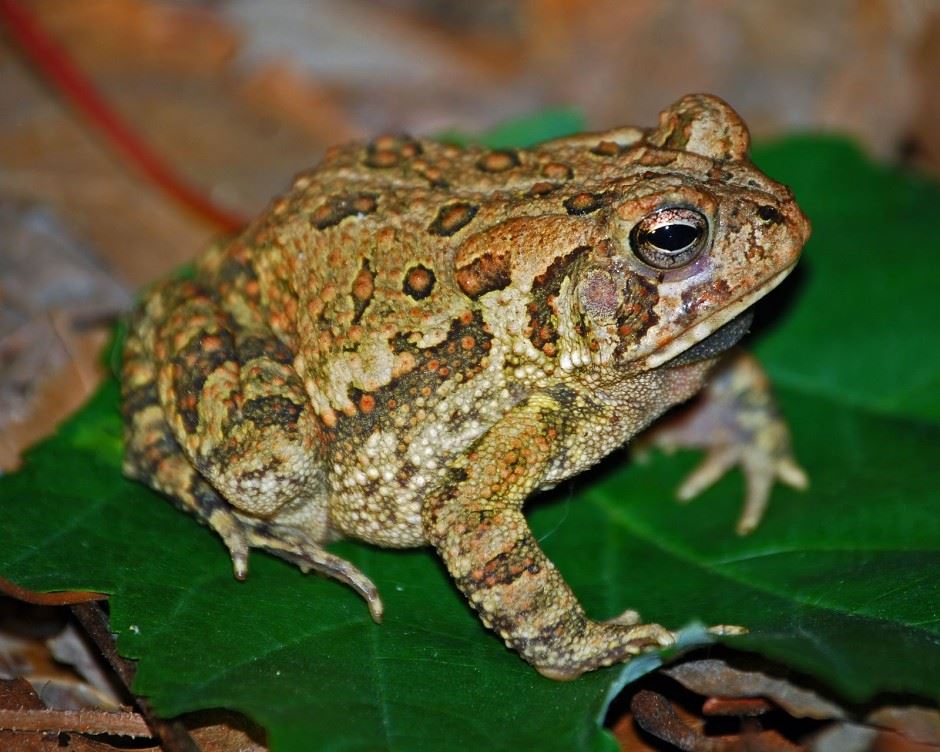- HOME
- Wildlife We Love
- Calling All Critters
- American Toad

American Toad
*Please note that clicking a link below will take you to a different website. To return to this page, simply close the new tab or window that opens. The eastern American toad (B. a. americanus) is a medium-sized toad usually ranging in size from 5–9 cm (2.0–3.5 in);[7] record 11.1 centimetres (4.4 in).[8] DescriptionThe colour and pattern is somewhat variable. Skin colour can change depending on humidity, stress, and temperature. Colour changes range from yellow to brown to black. Their breeding habits are very similar to Bufo fowleri. The call or voice of a breeding male is a high trill, lasting 6–30 seconds,[8] similar to a ringing telephone. They hibernate during the winter. The eastern American toad has spots that contain only one to two warts. It also has enlarged warts on the tibia or lower leg below the knee. While the belly is usually spotted, it is generally more so on the forward half (in some rare individuals there may be few or no spots). This subspecies of the American toad has no or very little markings on it. The spades on the back legs are blackish. Some toads of this subspecies have red warts on their bodies. Also eastern American toads have parotoid glands that are the same colour as the surrounding skin. The glands don’t have any patterning on them.Other species which may be confused with the eastern American toad are Fowler’s toad, which has three or more warts in the largest dark spots, and in the far west of its range woodhouse’s toad. Fowler’s toad can be especially difficult to identify in comparison to the eastern American toad but one difference is that it never has a spotted belly and both cranial crests touch the parotoid glands. In the eastern American toad these crests almost never touch the parotoid glands, which secrete bufotoxin, a poisonous substance. The poison the toad excretes is mild in comparison to other poisonous toads and frogs, but it can irritate human skin[9] and is dangerous to smaller animals (such as dogs) when ingested. Ecology and BehaviorAmerican toads require a semi-permanent freshwater pond or pool with shallow water in which to breed[8]and for their early development. They also require dense patches of vegetation, for cover and hunting grounds. Given these two things and a supply of insects for food, American toads can live almost everywhere, ranging from forests to flat grassland. Adult toads are mostly nocturnal, although juveniles are often abroad by day. These toads commonly seek cover in burrows, under boardwalks, flat stones, boards, logs, wood piles, or other cover. When cold weather comes, these toads dig backwards and bury themselves in the dirt of their summer homes, or they may choose another site in which to hibernate.[5]Their diet includes crickets, mealworms, earthworms, ants, spiders, slugs, centipedes, moths, and other small invertebrates.The eastern American toad may be confused with the Canadian toad in the area where they overlap, but the cranial crests in the American toad do not join to form a raised “boss” (bump) like they do in the Canadian toad. Its range also overlaps with the southern toad‘s, but in this species the cranial crests form two unique knobs. Cape Ann Vernal Pool Team * P.O. Box 39 * Gloucester, MA 01931 |
